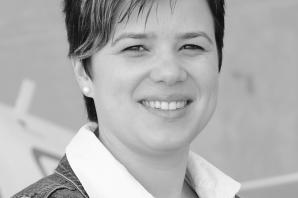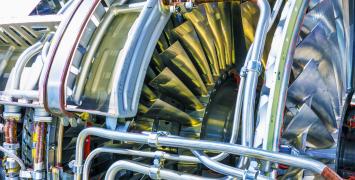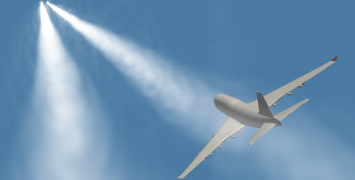Head and feet in the clouds
Fascinated by clouds and planes since childhood, she became a meteorologist and aerosol scientist. Prof. Bernadett Weinzierl looks at the atmosphere but she also flies through it, aiming to understand what happens in the upper layers of the sky. Using an ERC starting grant for her A-LIFE project, she chases aerosols, those tiny particles suspended in the air which are critically important to the global climate system.
What is the aim of your research project?
We focus on the fundamental physical and chemical properties of aerosol particles and clouds during their atmospheric lifetime. A-LIFE investigates the properties of absorbing aerosol layers, in particular mixtures of mineral dust and black carbon, and studies potential links between the presence of absorbing particles and aerosol layer lifetime.
Both natural and man-made particles contribute to the global aerosol load. Moving through the atmosphere, the physical and chemical properties of particles may change, and aerosols from different sources can mix. Overall, aerosols have a cooling effect because they scatter the sunlight. In addition, aerosols can also change the properties of clouds, for example making clouds appear brighter in a polluted environment and changing the cloud’s lifespan. Some aerosols like mineral dust and black carbon (BC) not only scatter but also absorb sunlight, which can lead to a warming of the atmosphere, with important implications for weather and climate.
One of the strengths of the A-LIFE project is its study of aerosol mixtures and the identification of absorption by different aerosol types. According to model simulations, black carbon (BC) is the second or third contributor to current global warming after CO2. Due to the short lifetime of BC - weeks, compared to hundreds of years for CO2 - controlling BC emissions has been suggested to provide significant climate benefits, but the uncertainties are high and it is even possible that part of the absorption attributed to BC comes from mineral dust, in particular in mixtures. A-LIFE addresses a number of questions in this area, including some regarding BC measurements and separating its effects from those of mineral dust, for example.
You measure aerosols from the ground, but also during flights, why?
Although aerosol research is one of the main topics in atmospheric science, most existing measurements were taken from the ground, but aerosol layers often occur at altitudes of several kilometres above. There is only sparse data on aerosols, in all their diversity, at different altitudes and latitudes. Thanks to the ERC, we have equipped the DLR research aircraft Falcon with newly developed instrumentation that allows us to fly through the aerosol layers and to directly observe the aerosols’ characteristics in the different environments.
What are the most interesting findings so far?
Developing novel instrumentation and modelling tools, as well as making measurements directly in the aerosol layers are already an innovation and a success. During the field campaign, we managed, for instance, to study a Saharan dust outbreak and dust-impacted clouds during several flights, while the dust outbreak moved eastwards. This gave us the opportunity to assess modification during transport and study aerosol-cloud interaction. Other highlights were the measurements of dust-BC mixtures as well as Arabian and Saharan dust layers above each other.
The collected data enable us to assess similarities and differences in mineral dust properties. A strong vertical layering of different aerosol types was observed. We expected to see a lot of pollution, but were surprised to discover so much man-made aerosol, in particular at low altitudes over the sea. We also found mineral dust at a much higher altitudes than recorded previously: up to 9-11 km.
The analysis of the A-LIFE dataset will help to reduce existing uncertainties in the understanding of absorbing aerosols and provide important input towards evidence-based policy-making in the field of climate change.






